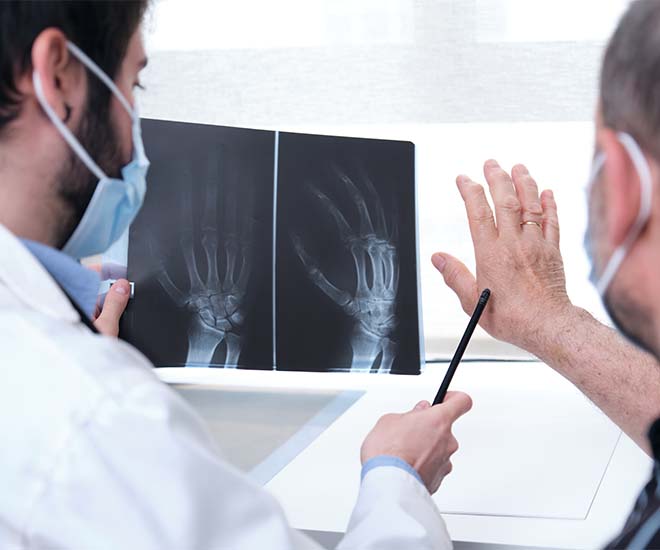
Rheumatology Fellowship
The outstanding team of faculty mentors in Geisinger’s Rheumatology Fellowship will train you to succeed in a field that will constantly challenge your diagnostic skills.
About us
Alfred E. Denio III, MD, former program director
Rheumatology is a field that draws some of the most curious, creative and compassionate physicians — those who like to solve medical mysteries and get answers that can dramatically change patients’ lives.
Geisinger’s two-year, ACGME-accredited Rheumatology Fellowship program will immerse you in a skilled team dedicated to fostering the next generation of outstanding clinicians and problem solvers.
You’ll be part of a program that will provide you with comprehensive training in clinical rheumatology with a focus on research and quality. Our program has been commended for its excellent research component, osteoporosis curriculum — and, perhaps most importantly, our faculty-trainee relationships.
Our program is also well-established, an integral part of the Rheumatology Department at Geisinger Medical Center since 1975.
You’ll train with the most advanced technology available, including musculoskeletal ultrasound imaging and a fully integrated, advanced electronic health record that’s been in place for about two decades, expanding your research possibilities. In recent years, our robust research environment has led to groundbreaking innovations in patient care.
Our clinical side is as robust as our research. As our rheumatology fellow, you’ll join a team that includes five full-time, board-certified rheumatologist managers with an annual caseload of 15,000 outpatient visits. Thanks to our interdisciplinary focus, you’ll also have the advantage of working with our autoimmune eye clinic and autoimmune nephritis clinic.
Other services we provide include:
- Diagnosis and treatment of diseases that affect joints (arthritis), immune disorders of muscle, connective tissue diseases, immune diseases of blood vessels (vasculitis) and a variety of soft-tissue inflammatory conditions (bursitis, tendinitis)
- Consultative or ongoing clinical care for the above problems
- Full laboratory support for immunologic studies
- Joint/bursa aspiration and injection
- Consultative services for osteoporosis diagnosis and treatment in an osteoporosis disease management program
- Patient education
- Physical and occupational therapy, social services and counseling
- Research studies of rheumatologic disorders
- Interpretation of DXA scans
If you’re passionate about solving medical mysteries, collaborating with colleagues who value you and becoming a skilled clinician and communicator, we welcome you to join our program.
About Geisinger
Geisinger serves more than 1 million people in central and northeast Pennsylvania. We’ve been nationally recognized for innovative practices in quality, delivery models such as ProvenCare® and the use of an award-winning electronic medical record, Epic®. Our physician-led system has about 24,000 employees, including nearly 1,700 physicians, 10 hospital campuses, two research centers and a health plan with more than half a million members, all of which boost our hometown economies by $7.1 billion annually.
Location
Danville, Pa., is a unique and wonderful place to train. Opportunities for outdoor recreation are endless, the cost of living is low and traffic is almost nonexistent. We’re also close enough to Philadelphia, New York City and Washington, D.C., to make weekend getaways easy.
